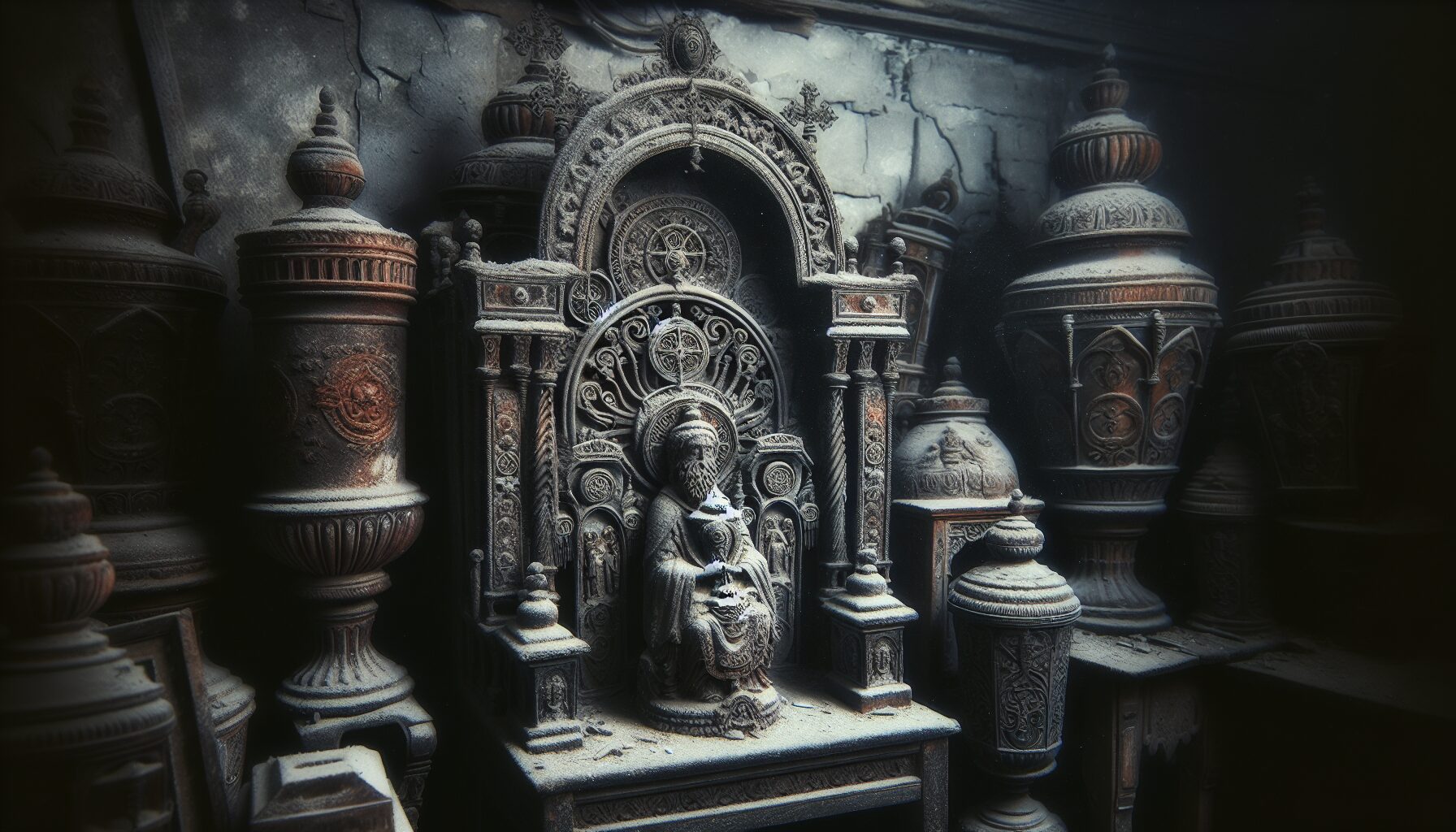Throughout history, religious artifacts have played a crucial role in the practice of faith and the expression of spirituality. However, as time moves forward, many of these sacred items have become forgotten by the general public and remain largely unrecognized within dusty altars. These artifacts, once revered, are now relegated to museums, private collections, and neglected sacred spaces. This article delves into the world of forgotten religious artifacts, exploring their history, significance, and the reasons why they deserve renewed attention.
The Significance of Religious Artifacts
- Symbols of Faith: Religious artifacts serve as tangible representations of the divine and are imbued with spiritual significance. They often symbolize the core tenets of a faith and provide a focal point for worship.
- Cultural Heritage: These artifacts are windows into the past, showcasing the artistry, craftsmanship, and beliefs of different cultures throughout history. They are crucial to understanding the evolution of spiritual practices and cultural exchange.
- Ritual Purposes: From amulets to relics, many artifacts have played critical roles in rituals, offering blessings, protection, and a means of communication with spiritual entities.
Examples of Forgotten Religious Artifacts
The Ark of the Covenant
The Ark of the Covenant is one of the most enigmatic and revered religious artifacts in history. Described in the Bible as a gold-covered wooden chest, it is said to have contained the stone tablets of the Ten Commandments. According to Smithsonian Magazine, the Ark disappeared after the Babylonian conquest of Jerusalem, and its whereabouts remain one of the greatest religious mysteries (source).
Buddhist Relics
Buddhism is rich in relics, often in the form of items believed to be remains of the Buddha or other significant monks. These relics are stored in stupas or stately pagodas. Over centuries, many of these relics have been lost to time, with some being subjects of modern archaeological pursuits. As noted by The New York Times, recent discoveries in Afghanistan have reignited interest in understanding their historical presence (source).
Indigenous Sacred Items
Indigenous cultures across the globe hold various sacred items in high esteem. These artifacts include masks, carvings, and tools used in ceremonies. Unfortunately, colonialism and cultural erosion have caused many of these artifacts to be forgotten or repurposed. Preservation efforts by tribal communities aim to restore the prominence and respect these items once commanded.
Preservation Challenges
The preservation of religious artifacts presents unique challenges. These include environmental factors such as humidity, temperature, and light exposure. Many of these artifacts require specialized care to prevent degradation.
- Funding and Resources: Often, the organizations managing these artifacts lack funding and expertise necessary for proper preservation.
- Political and Cultural Sensitivities: Artifacts can be embroiled in controversies over ownership, often sparking debates between nations, religious groups, and cultural institutions.
- Technological Limitations: While modern technology can aid in preservation, it cannot fully halt the slow passage of time, underlining the importance of photographic documentation and digital archiving.
Reviving Interest in Religious Artifacts
“A deeper understanding of religious artifacts connects us with a past often obscured by the fog of time.” — Historian Michael Roberts
To revive interest in these artifacts, we must blend education, technology, and community engagement:
- Educational Programs: Educators can integrate religious artifacts into history and art curricula, granting students a firsthand look at the intersection of faith and culture.
- Virtual Exhibitions: The digital age brings forth opportunities to showcase artifacts globally via virtual museums, removing geographic and financial barriers to education.
- Community Involvement: Engaging local communities to assist in artifact preservation and storytelling ensures that these items retain their cultural significance and historical narratives.
Conclusion
Religious artifacts, although sometimes forgotten, are powerful connections to our shared past. Their stories convey the diverse spiritual pathways humanity has traversed and remind us of the cultures that have shaped our modern world. By acknowledging the importance of these sacred items, we honor the beliefs and traditions they represent, ensuring that they remain a vital part of the world’s cultural and spiritual tapestry.
As the sands of time continue to shift, it is imperative that we renew our efforts to preserve and celebrate these dusty altars, allowing future generations to unlock the stories and teachings they encapsulate.

Comments